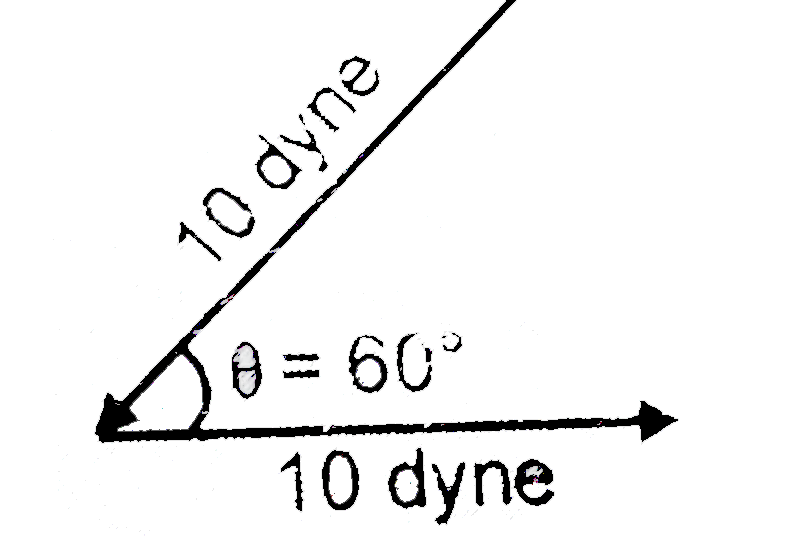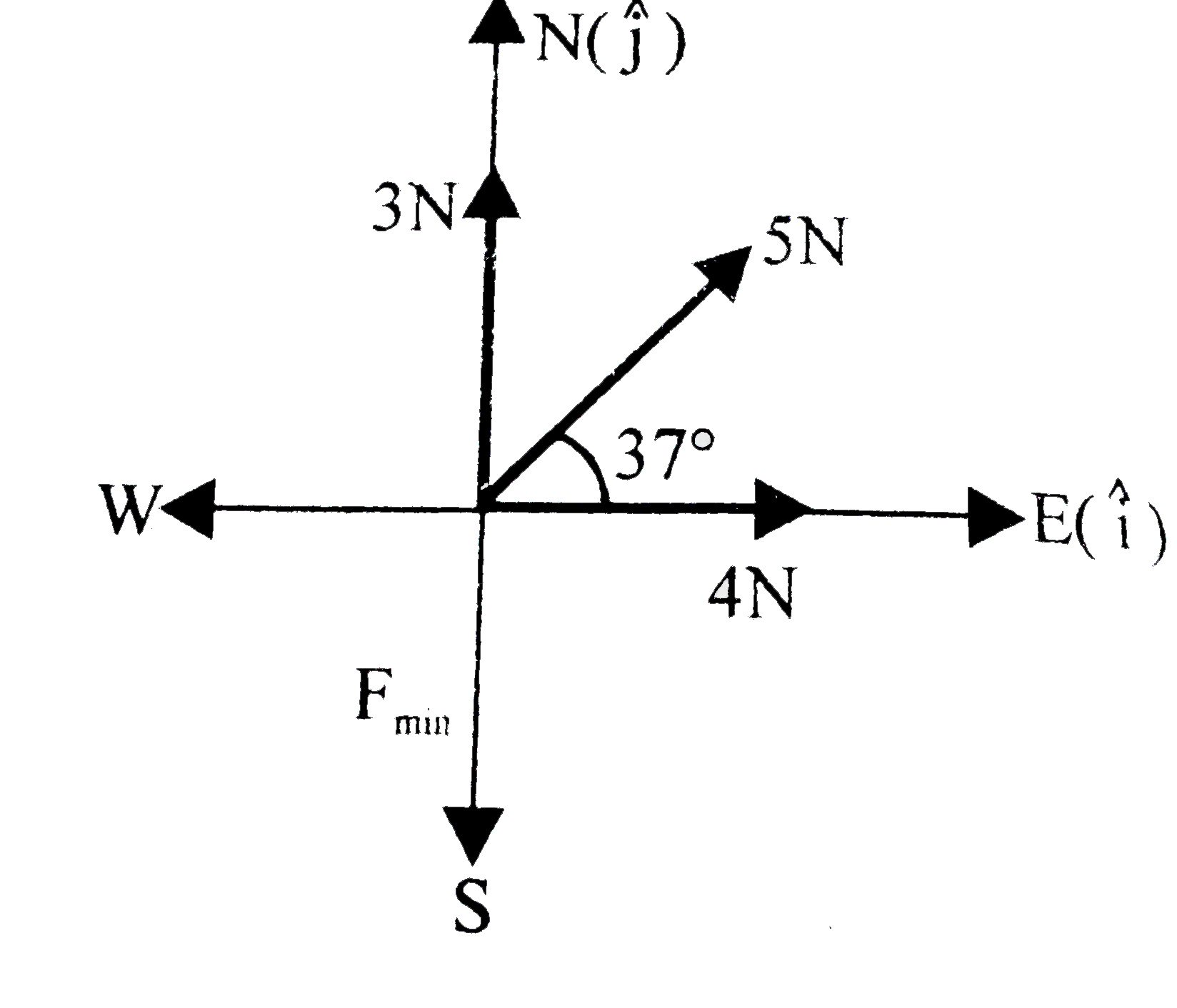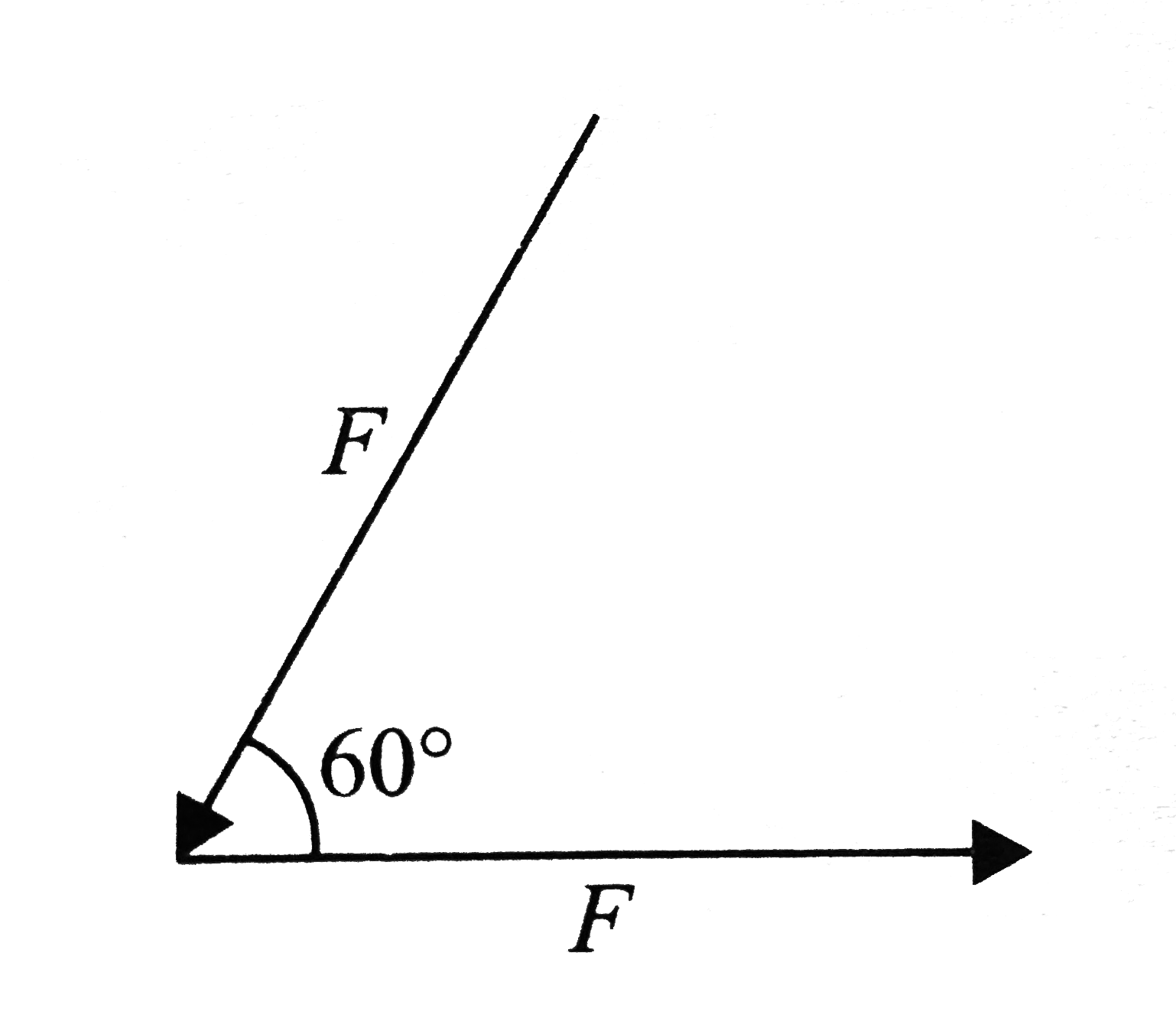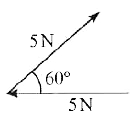Two forces, each numerically equal to 10 dyne are acting as shown in the following figure.
Their resultant is :
 Solution in Gujrati
Solution in Gujrati
The angle θ between the two vector is 120∘ and not 60∘.
∴R=√(10)2+(10)2+2(10)(10)(cos120∘)
=√100+100−100=10 dyne

Topper's Solved these Questions
- MISCELLANEOUSBOOK - ALLEN CHAPTER - MISCELLANEOUSEXERCISE - Part -II Example
61 Videos
- MISCELLANEOUSBOOK - ALLEN CHAPTER - MISCELLANEOUSEXERCISE - Part -II Example Some worked out Examples
1 Videos
- KINEMATICS (MOTION ALONG A STRAIGHT LINE AND MOTION IN A PLANE)BOOK - ALLEN CHAPTER - KINEMATICS (MOTION ALONG A STRAIGHT LINE AND MOTION IN A PLANE)EXERCISE - BEGINNER S BOX-7
8 Videos
- PHYSICAL WORLD, UNITS AND DIMENSIONS & ERRORS IN MEASUREMENT BOOK - ALLEN CHAPTER - PHYSICAL WORLD, UNITS AND DIMENSIONS & ERRORS IN MEASUREMENT EXERCISE - EXERCISE-IV
7 Videos
Similar Questions
A particle of mass m is located in a region where its potential energy [U(x)] depends on the position x as potential Energy [U(x)]=1x2−bx here a and b are positive constants…
(i) Write dimensional formula of a and b
(ii) If the time perios of oscillation which is calculated from above formula is stated by a student as T=4πa√mab2, Check whether his answer is dimensionally correct.
View SolutionFor spherically symmetrical charge distribution, electric field at a distance r from the centre of sphere is →E=kr7→r, where k is a constant. What will be the volume charge density at a distance r from the centre of sphere?
View SolutionA football player kicks a ball at an angle of 30∘ with an initial speed of 20 m/s. Assuming that the ball travels in a vertical plane, calculate (a) the time at which the ball reaches the highest point (b) the maximum height reached (c) the horizontal range of the ball (d) the time for which the ball is in the air, (g=10m/s2)
View SolutionAssertion : Gravitational forces do not depend on the medium between the masses.
Reason : Mediating particle responsible for gravitational force is graviton.
View SolutionTwo forces, each equal to F, act as shown in (figure) Their resultant is

View SolutionTwo force each numerically equal to 10 dynes are acting as shown in the figure, then find resultant of these two vectors.
View SolutionThe resultant of two equal forces acting at right angles to each other is 1414 dyne. Find the magnitude of either force.
View SolutionTwo forces of 4 dyne and 3 dyne act upon a body . The resultant force on the body can be only be :
View SolutionTwo forces each numerically equal to 5N are acting as shown in the figure, then find resultant of these two vectors.
View SolutionTwo forces each numerically equal to 10 dynes are acting as shown in the following figure, then their resultant is -
View SolutionTwo forces of 4 dyne and 3 dyne act upon a body. The resultant force on the body can only be –
View SolutionThe forces, each numerically equal to 5 N, are acting as shown in the Figure. Find the angle between forces?
View SolutionTwo forces , each numerically equal to 10 dyne are acting as shown in the following figure Their resultant is :
View Solutionदो बलों जिनमें प्रत्येक का संख्यात्मक मान 10 डाइन के बराबर है चित्र में दर्शाये अनुसार लग रहे हैं। इन दोनों बलों का परिणामी ज्ञात कीजिए।
View SolutionTwo forces, each numerically equal to 5 N, are acting as shown in the figure. Then the resultant is

View SolutionTwo forces, each equal to F, act as shown in (figure) Their resultant is

View Solution
